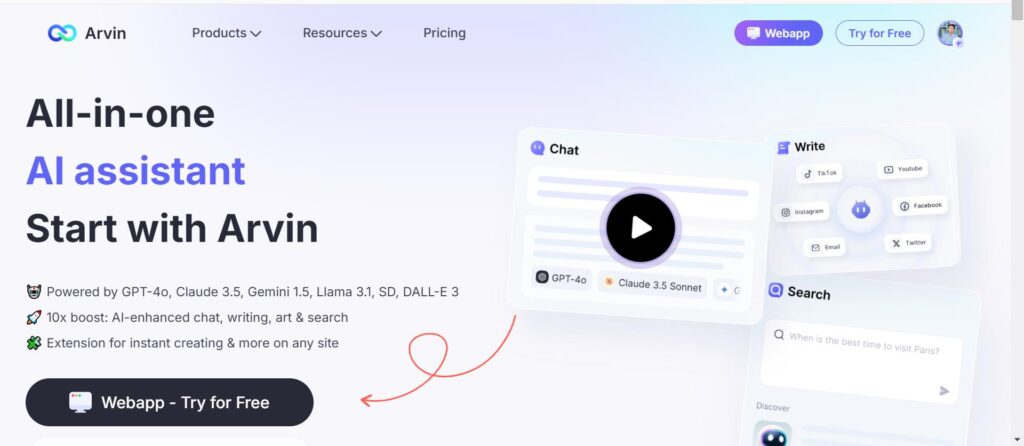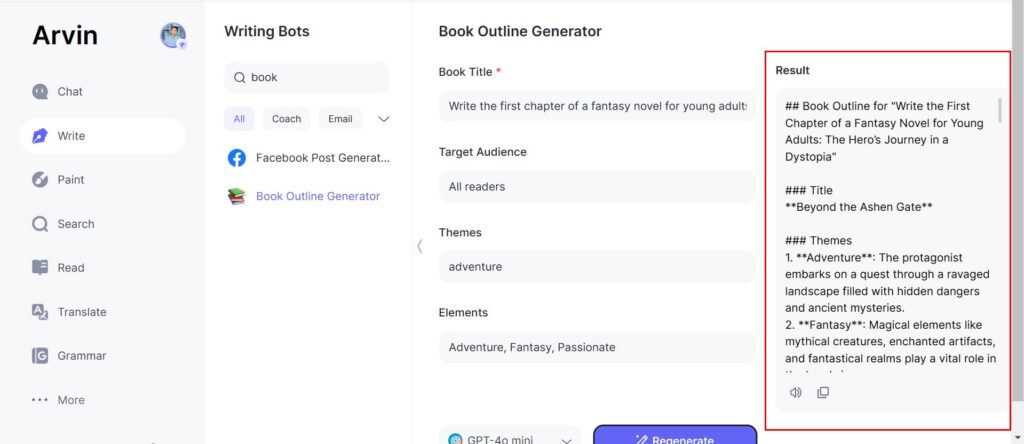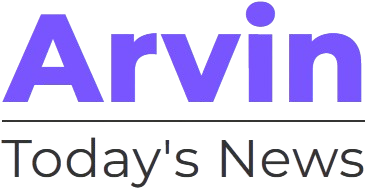Publishing a book is a dream for many writers. But, bringing that dream to reality is difficult in terms of finance. Whether you’re an experienced author or a part time writer, understanding the costs associated with publishing a book is crucial. Proper budgeting will ensure that you use your resources for the best without losing your quality. In this resource, we will break the how much does it cost to publish a book tools such as Arvin AI to make the process easier.
Part 1: Understanding the Costs of Publishing a Book
Publishing costs vary widely depending upon the publishing method and more specifically on the needs for your manuscript.
1. Self-Publishing vs. Traditional Publishing
Publishing a book has two main approaches: self-publishing and traditional publishing. Each entails different processes, advantages, and cost structures:
- Self-Publishing: You do everything, from editing to designing the cover and marketing. But you take on all of the cost.
- Traditional Publishing: A publisher essentially buys your book by paying for production, professional edits, and marketing. To the how much does it cost to publish a book, this all translates to a share in the profits and control of the creative aspects of your book.
Key Differences in Costs:
Upfront Costs:
- Self-Publishing: Ranges from $1,000 to $5,000 depending on the service(s) you select-e.g., editing, cover design, etc.
- Traditional Publishing: Normally, no upfront costs to the author, but you may pay for submitting manuscripts or hiring literary agents.
Revenue Share:
- Self-Publishing: You earn most of the revenue, usually 70-100% of the royalties.
- Traditional Publishing: Royalties are 5-15%, depending on your contract.
- Control and Quality: Self-publishing allows you to invest in high-quality services, but traditional publishers decide the quality and design of the final product.
2. Factors Influencing Publishing Costs
Several factors determine the how much does it cost to publish a book. These are the book’s genre, length, complexity, and the desired quality level.
Book Genre and Target Audience:
The genre also contributes to costs.
- Fiction: Requires more developmental editing to help with the plot and character arcs.
- Non-Fiction: It will require research, fact-checking, and other forms of specialized formatting in cases where there are graphs or illustrations.
- Children’s Books: Usually have vibrant illustrations and thus more expensive design work.
- Target Audience: A niche audience may require greater marketing investment to gain visibility.
Manuscript Length and Complexity:
- Shorter Books (under 50,000 words): More easily edited and produced, but they may need greater marketing to be of sufficient value.
- Longer Books (over 100,000 words): Editing and formatting will be more expensive since the book contains so many more words.
- Complex Manuscripts: Graphic books with complicated layouts, or books with multiple images, Technical books, such as a cookbook or textbook.
Desired Publishing Quality:
The better your budget, the higher the quality of your how much does it cost to publish a book.
- Editing: This is a basic proofread that will cost around $0.01–$0.03 per word, but more developed editing (developmental or line editing) can be around $0.10 per word.
- Cover Design: This ranges from $200 to $1,000 depending on the experience of the designer.
- Formatting and Layout: Depending on the quality, for print and e-books it can cost between $100 and $500.
- Printing: Print-on-demand printing removes the cost of advance printing but the print fee is often higher per book than in print in advance.
Part 2: Breakdown of Costs for Publishing a Book
Publishing a book is a multi-step process with each step having its cost. In this section, we will take you through the pre-publishing, publishing, marketing, and post-publishing costs. Understanding these costs will enable you to plan effectively and maximize your book’s impact.
1. Pre-Publishing Costs
Editing:
Editing is one of the most important steps in how much does it cost to publish a book. A well-edited manuscript greatly enhances your book’s credibility and reader satisfaction. There are three main types of editing:
- Developmental Editing: This type of editing pays attention to the big picture—plot structure, character development, and overall flow. This is essential for fiction and complex non-fiction books and average Cost about $0.03–$0.10 per word. For a 60,000-word book, this ranges from $1,800 to $6,000.
- Copy Editing: This editing stage concerns grammar, sentence structure, and consistency. This is when your manuscript reads smoothly and average Cost about $0.02–$0.05 per word, thus costing $1,200 to $3,000 for a 60,000-word book.
- Proofreading: The final stage of editing. Here, the focus is on typos, punctuation errors, and formatting inconsistencies and average Cost about $0.01–$0.03 per word, thus amounting to $600 to $1,800 for the same manuscript.
Book Cover Design
The cover of your book is what first draws the eye of potential readers. A great design can make or break sales.
- Importance of Professional Cover: A professional cover conveys quality and attracts readers. This is especially true for romance, thriller, or fantasy novels where the visuals are highly involved.
- Cost Options:
- Designer fee: $200–$1,000 depending on designer’s experience.
- Online Tools: Canva or BookBrush charges from $20 to $50 for templates. Though, customization is limited to this range.
Formatting:
It’s just as important that your book has an appealing look in print as it does in digital form. Formatting will help achieve that.
- Print Formatting: Major focus on margins, type face, and alignment for printing.
- Digital Formatting: Prepares the manuscript for e-readers like Kindle or Kobo. This involves generating compatible file types, for example, EPUB or MOBI.
- Related Expenses: Hiring a professional formatter costs $100–$500, whereas DIY tools such as Vellum (exclusive software for Mac) will cost about $249 for unlimited e-book projects.
2. Publishing Costs:
ISBN (International Standard Book Number) and Copyright
- ISBN: This unique identifier helps track sales and library listings and Cost about $125 per ISBN in the U.S., although discounts are often provided for bulk orders.
- Copyright Registration: Protects the intellectual property, thus ensuring lawful rights over your work and cost about Cost $45 to $85 in the United States, depending on the file format and type of registration
Printing Costs (for Print Edition):
Printing costs vary on aspects such as book size, pages, and number of books to be printed.
- Print-on-Demand (POD): Suitable for how much does it cost to publish a book authors because it does not require upfront inventory costs. Each book costs between $3 and $8 to print, depending on the specifications.
- Bulk Printing: Less expensive per book but requires an upfront investment. Printing 500 copies will cost between $2,000 and $4,000, depending on the book’s specifications.
E-Book Publishing Fees:
Publishing on digital platforms such as Amazon Kindle Direct Publishing (KDP), Kobo, or Apple Books has minimal upfront costs:
- Amazon KDP: No upfront fees; Amazon takes a royalty cut of 30% for books priced between $2.99 and $9.99 and 65% for other price ranges.
- Kobo: Similar to Amazon, with no upfront fees but royalty percentages depend on the pricing structure.
3. Marketing and Promotion Costs
How much does it cost to publish a book is only half the journey; promoting it effectively is vital for success.
Online Advertising
Online ads help target readers based on their interests and demographics.
- Facebook Ads: Budget-friendly and highly customizable, with a minimum daily budget of $5. Winning campaigns can cost $300–$1,000 per month.
- Google Ads: Best for non-fiction or niche books, with a cost per click of $0.50–$2.00.
- Amazon Ads: Good for e-books, with pay-per-click campaigns costing $100–$500 per month, depending on competition and ad type.
Book Launch Events
Launch events generate buzz and attract media attention.
- Virtual Launches: Cost-effective, utilizing Zoom or YouTube. This can range from $50 for simple arrangements to $300 if hiring professionals for graphics or moderation.
- In-Person Launches: Hosting a local event at bookstores or community centers can be in the range of $500–$1,500, which covers venue, refreshments, and promotional materials.
Author Website and Branding
Professional online presence builds credibility and attracts readers.
- Website Setup: DIY platforms such as WordPress or Wix cost $100–$300 per year (for hosting and premium templates) and professional web designers charge $500–$3,000 depending on the complexity.
- Branding: This includes a logo, social media banners, and branded content. The cost for this ranges from $200 to $1,000 depending on the services used.
4. Post-Publishing Costs
Ongoing Marketing Efforts
Marketing does not stop at the book launch. Constant efforts are required to keep your book in the eye of the public.
- Email Marketing: Building an email list and sending newsletters can cost $20–$50 per month using tools like Mailchimp.
- Social Media Ads: Monthly ad spend varies but often ranges between $100 and $500.
Updating or Republishing Editions
Over time, you may need to update your book to correct errors, add new content, or release a new edition.
- Revisions: Minor updates may cost $100–$300 if hiring a professional formatter or editor.
- New Editions: Cost of rewriting and rebranding may vary from $500 to $2,000 depending upon the scope of alteration.
Part 3: How Arvin AI Can Help to Cut Costs and Time?
Many dream of how much does it cost to publish a book, but the costs and time involved often discourage many aspiring authors. Main cost always the writing cost then you can publish easily if it is very good written. This is where Arvin AI, an innovative tool designed for modern writers, comes into play. By streamlining the publishing process and offering AI-driven solutions, Arvin AI helps authors save both time and money, making professional high quality content.
Simplifying the Publishing Journey
Publishing a book is generally associated with juggling multiple tasks: writing, editing, designing, and marketing. Each step demands time, expertise, and financial investment. Arvin AI eliminates much of this complexity by offering intelligent tools to do all this that streamline the process, allowing authors to focus on their creative vision.
Competitive Edge for Authors
Whether you are a first-time writer or an experienced author, Arvin AI has different benefits:
- Cost-Effective: It reduces the need for expensive professional services like editing and design, thereby lowering the overall cost.
- Time Efficiency: It speeds up the how much does it cost to publish a book timeline by automating repetitive tasks, allowing authors to meet deadlines without sacrificing quality.
- Professional Quality: Arvin AI ensures high standards writing, which allows self-published authors to compete with traditionally
Key Features:
AI Writing Assistant:
The writing assistant tool offered by Arvin AI is best suited for those who get stuck with writer’s block or are working to perfect their drafts.
- Faster Manuscript Development: The algorithms of the software provide a sense of sentence structure and flow that helps polish up the manuscript more quickly for authors.
- Language and Grammar Support: It captures mistakes in the real sense and corrects them while keeping your manuscript free of typos or awkward phrase use.
- Ideation Generation: Stumped for a plot idea or chapter outline? Use Arvin AI to propose interesting phrases pertinent to the genre and readership.
Editing and Proofing Capabilities:
Quality editing is fundamental, but sometimes hiring paid professional editors hurts the pocket. Enter Arvin AI: your go-to inexpensive alternative.
- Developmental Feedback: The platform analyzes your manuscript and provides insights into pacing, character development, and plot structure.
- Advanced Proofreading: Its AI-driven proofreading feature identifies even the smallest errors, ensuring your manuscript is publication-ready.
- Style Consistency: Arvin AI checks for tone and style consistency, making your book cohesive and enjoyable for readers.
Cover Design Suggestions:
A striking cover is crucial for capturing readers’ attention. Arvin AI simplifies this with:
- AI-Based Creativity: The platform generates cover design ideas based on your book’s genre, target audience, and themes.
- Customization Options: Authors can tweak AI-generated designs to align with their vision, ensuring a unique and professional look.
- Cost Savings: By reducing reliance on freelance designers, Arvin AI cuts down on expenses while maintaining high-quality visuals.
Marketing Support:
Promotion is one of the major factors for a book’s success. Arvin AI offers customized marketing strategies to help your book reach as many people as possible:
- Targeted Campaigns: The AI analyzes market trends and recommends advertising platforms like Amazon Ads, Facebook, or Instagram, tailored to your audience.
- Social Media Content: It generates engaging social media posts, captions, and graphics to enhance your online presence.
- Launch Strategies: Arvin AI helps plan book launch events, which can either be virtual or in-person, to bring maximum visibility.
Steps to Use Arvin AI for Your Publishing Journey
You can easily begin with Arvin AI. It is easy, and here are the steps in using its functionality for publishing purposes:
Step 1: Sign Up to an Account
Go to the official page of Arvin AI on the website and sign in using your email address. Select a subscription based on your how much does it cost to publish a book objectives and budget.

Step 2: Upload Your Manuscript
Once you log in to the website, you can upload your manuscript. Select features to be included in your manuscript such as writing support, editing, or even formatting.

Step 3: Revise Your Manuscript
Use the writing assistant to edit your manuscript and incorporate AI-driven ideas.
You can enable editing as well as proofread capabilities to make sure that the manuscript meets professional standards.

Step 4: Design Your Cover
Provide details about your book’s theme and audience to Arvin AI logo first then use your logo on cover. Choose from AI-generated cover designs and customize them as needed.

Part 4: Practical Tips to how much does it cost to publish a book
Publishing a book doesn’t have to break the bank. By taking strategic steps and leveraging the right resources, you can significantly cut costs while still producing a high-quality product. Here are some practical tips to save money during the how much does it cost to publish a book process.
1. Leveraging Free and Low-Cost Tools
Many free and affordable tools streamline a publishing journey without ever jeopardizing quality.
- Writing and Editing: Utilize shared editing tools such as Google Docs for collaborative use while utilizing free versions of Arvin AI or Hemingway Editor for basic edits. Higher end needs can be accommodated through affordable AI editing assistance with Arvin AI and provide support for edits, proofreads, and formatting.
- Design Tools: Free or low-cost templates for book covers and promotional graphics are available at Canva, while creative cover designs can be generated with Arvin AI at a cost fraction compared to hiring a designer.
- Marketing: Instead of costly marketing agencies, use free tools like Buffer or Hootsuite to schedule and analyze social media. Arvin AI will help craft marketing strategies appropriate for your book’s target audience.
2. Networking with Other Authors for Shared Resources
Building connections within the writing community can unlock opportunities for resource sharing.
- Beta Readers: Fellow authors can provide valuable feedback on your manuscript without charging a fee.
- Group Discounts: Collaborate with other writers to negotiate bulk discounts on services like printing or ISBN purchases.
- Knowledge Sharing: Experienced authors often share free tips and templates for various aspects of publishing, from formatting to marketing.
3. Crowdfunding or Pre-Selling Copies
One of the smartest ways in reducing pressure to get more money is to generate it prior to the book’s launch.
- Crowdfunding: Crowdfunding platforms like Kickstarter or GoFundMe enable you to pitch your book idea before your potential supporters. You could offer exclusive rewards, signed copies, or acknowledgments as incentives for contributions.
- Pre-Sales: Set up pre-sale campaigns on platforms like Amazon Kindle Direct Publishing (KDP). This not only generates funds but also helps gauge reader interest.
4. Building an Author Platform Early
Establishing your online presence early can drastically reduce marketing costs later.
- Social Media: Connect regularly with your public through Instagram, Facebook, or Twitter to create a faithful following.
- Author Website: Develop a basic website with your books, blog posts, and release dates. Popular and affordable solutions for this purpose include WordPress or Wix.
- Email List: Begin to gather subscribers by requesting emails to start your mailing list and communicate directly with your readers. Free plans are offered by Mailchimp.
Part 5: Real-Life Cost Examples
The cost of publishing depends on how much does it cost to publish a book. Let’s discuss real-life examples for a better understanding of these costs.
1. Case Study of Self-Published Author
Author: Jane Doe
Genre: Fiction
Cost Breakdown:
- Editing: $1,200 (developmental and copy editing)
- Cover Design: $300 (freelance designer)
- Formatting: $100 (hired service)
- ISBN and Copyright: $150
- Printing Costs: $1,500 (for 20 copies)
- Marketing: $500 (social media ads and launch event)
- Total Cost: $3,750
Jane’s book sold 1,000 copies in the first six months. Her investment in professional editing and marketing paid off in the book’s appeal and reach, earning her $6,000 in royalties.
2. Comparison of Various Methods of Publishing
Self-Publishing
- Average Cost: $2,000-$5,000
- Flexibility: Complete control over everything
- Earnings: Higher royalties 70% on platforms like Amazon KDP
Traditional Publishing
- Average Cost: Minimal upfront cost (publisher covers expenses).
- Flexibility: Limited control over design, marketing, and royalties.
- Earnings: Lower royalties (10–15%).
Self-publishing requires more upfront investment but offers higher returns and creative freedom. Traditional how much does it cost to publish a book is less risky but provides limited financial rewards for authors.
Conclusion
The process of publishing can be a daunting task and so planning and smart investments make it easier for any aspiring author to see their book become a published reality. Knowing key costs-helps you budgeting and spend correctly: design, how much does it cost to publish a book, marketing, and editing. Arvin AI is an innovative writing tool that helps save both time and cost while attaining professional standard results. Today, with clarity, confidence and the tools in place to take your dream from your mind and to reality, you can begin your publishing journey.
FAQs: Common Questions About Publishing Costs
Can I Publish a Book for Free?
Yes, it is free to publish eBooks through platforms like Amazon KDP. But editing, design, and marketing require some investment for a product to be professionally done to attract readers.
What is the Cheapest Way to Publish a Book?
The cheapest option is a how much does it cost to publish a book with minimal services: free tools for formatting and design, and beta readers, not professional editors. Sales may be affected if a quality in compromised.
How Much Do Bestselling Authors Spend on Publishing?
Bestselling authors spend $5,000 to $15,000 on professional editing and premium cover design and highly extensive marketing campaigns. High investment usually means better sale and visibility.
Does Arvin AI Do Non-Fiction and Poetry?
Absolutely! Arvin AI handles all genres including nonfiction, poetry, and technical writings. Its features adapt all styles and requirements, so always quality results for the written work.






